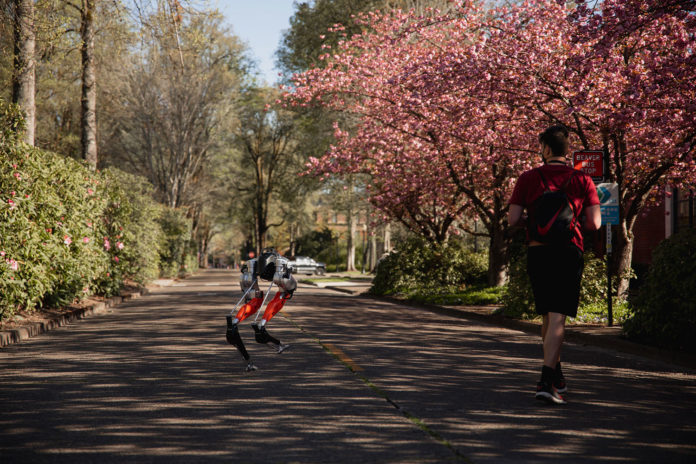Cassie, the robot invented at Oregon State University and produced by OSU spinout company Agility Robotics, has made history by traversing 5 kilometers, completing the route in just over 53 minutes.
The Cassie robot was first introduced in 2017. The bipedal robot used machine learning to control a running gait on outdoor terrain, completing the 5K in a total time of 53 minutes, 3 seconds, which is about the same speed as a human taking a meandering stroll. It is an impressive “first” for the field of robotics – which, outside of star developers like Boston Dynamics, has struggled to stay upright.
The robot also completed its hour-long run without being tethered or needing a battery charge, which is also an impressive side for the future of humanoid machines.
With knees that bend like an ostrich’s, Cassie taught itself to run with what’s known as a deep reinforcement learning algorithm. Running requires the ability to maintain balance while switching positions or otherwise being in motion, and Cassie has learned to fine-tune its movements to stay upright as it moves.
It is worth noting that the robot took a few tumbles that added about 6.5 minutes of “resets” to its time, according to the press release. The first time because its computer was overheated and the second time because Cassie was asked to execute a turn at too high a speed.
“Deep reinforcement learning is a powerful method in AI that opens up skills like running, skipping, and walking up and downstairs,” said Yesh Godse, an undergraduate in the Dynamic Robotics Laboratory.
Despite the fact that Cassie will not soon overtake humans and begin to take first place in marathons, it is considered a promising development, the improvement of which could change the way we think about the capabilities of robots.
Researchers believe that walking robots will one day be a common sight. In addition to logistics work like package delivery, bipedal robots eventually will have the intelligence and safety capabilities to help people in their own homes.
“In the not very distant future, everyone will see and interact with robots in many places in their everyday lives, robots that work alongside us and improve our quality of life,” said robotics professor Jonathan Hurst.
